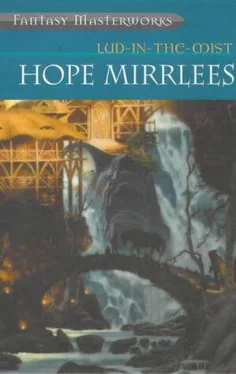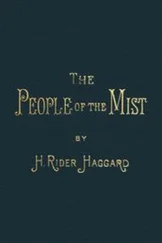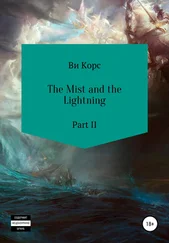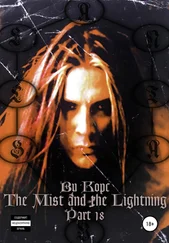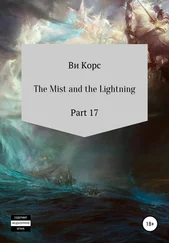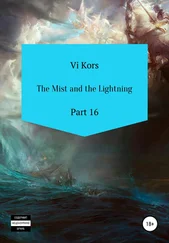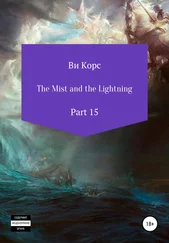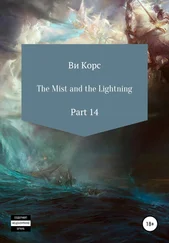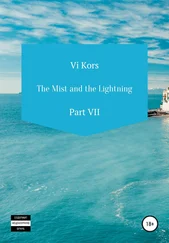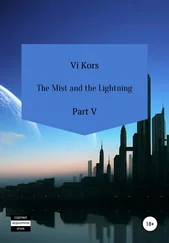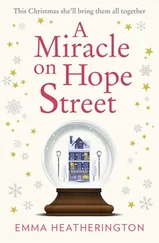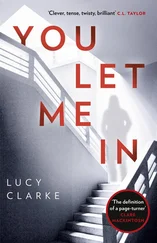In the eye of the law, neither Fairyland nor fairy things existed. But then, as Master Josiah had pointed out, the law plays fast and loose with reality - and no one really believes it.
Gradually, an almost physical horror came to be felt for anything connected with the Fairies and Fairyland, and society followed the law in completely ignoring their existence. Indeed, the very word "fairy" became taboo, and was never heard on polite lips, while the greatest insult one Dorimarite could hurl at another was to call him "Son of a Fairy."
But, on the painted ceilings of ancient houses, in the peeling frescoes of old barns, in the fragments of bas-reliefs built into modern structures, and, above all, in the tragic funereal statues of the Fields of Grammary, a Winckelmann, had he visited Dorimare, would have found, as he did in the rococo Rome of the eighteenth century, traces of an old and solemn art, the designs of which served as poncifs to the modern artists. For instance, a well-known advertisement of a certain cheese, which depicted a comic, fat little man menacing with knife and fork an enormous cheese hanging in the sky like the moon, was really a sort of unconscious comic reprisal made against the action depicted in a very ancient Dorimarite design, wherein the moon itself pursued a frieze of tragic fugitives.
Well, a few years before the opening of this story, a Winckelmann, though an anonymous one, actually did appear in Lud-in-the-Mist; although the field of his enquiries was not limited to the plastic arts. He published a book, entitled _Traces of Fairy in the Inhabitants, Customs, Art, Vegetation and Language of Dorimare_.
His thesis was this: that there was an unmistakable fairy strain running through the race of Dorimarites, which could only be explained by the hypothesis that, in the olden days, there had been frequent intermarriage between them and the Fairies. For instance, the red hair, so frequent in Dorimare, pointed, he maintained, to such a strain. It was also to be found, he asserted, in the cattle of Dorimare. For this assertion he had some foundation, for it was undeniable that from time to time a dun or dapple cow would bring forth a calf of a bluish tinge, whose dung was of a ruddy gold. And tradition taught that all the cattle of Fairyland were blue, and that fairy gold turned into dung when it had crossed the border. Tradition also taught that all the flowers of Fairyland were red, and it was indisputable that the cornflowers of Dorimare sprang up from time to time as red as poppies, and the lilies as red as damask roses. Moreover, he discovered traces of the Fairies' language in the oaths of the Dorimarites and in some of their names. And, to a stranger, it certainly produced an odd impression to hear such high-flown oaths as; by the Sun, Moon and Stars; by the Golden Apples of the West; by the Harvest of Souls; by the White Ladies of the Fields; by the Milky Way, come tumbling out in the same breath with such homely expletives as Busty Bridget; Toasted Cheese; Suffering Cats; by my Great-Aunt's Rump; or to find names like Dreamsweet, Ambrose, Moonlove, wedded to such grotesque surnames as Baldbreech, Fliperarde, or Pyepowders.
With regard to the designs of old tapestries and old bas-reliefs, he maintained that they were illustrations of the flora, fauna, and history of Fairyland, and scouted the orthodox theory which explained the strange birds and flowers as being due either to the artists' unbridled fancy or to their imperfect control of their medium, and considered that the fantastic scenes were taken from the rituals of the old religion. For, he insisted, all artistic types, all ritual acts, must be modelled on realities; and Fairyland is the place where what we look upon as symbols and figures actually exist and occur.
If the antiquary, then, was correct, the Dorimarite, like a Dutchman of the seventeenth century, smoking his churchwarden among his tulips, and eating his dinner off Delft plates, had trivialised to his own taste the solemn spiritual art of a remote, forbidden land, which he believed to be inhabited by grotesque and evil creatures given over to strange vices and to dark cults… nevertheless in the veins of the Dutchman of Dorimare there flowed without his knowing it the blood of these same evil creatures.
It is easy to imagine the fury caused in Lud-in-the-Mist by the appearance of this book. The printer was, of course, heavily fined, but he was unable to throw any light on its authorship. The manuscript, he said, had been brought to him by a rough, red-haired lad, whom he had never seen before. All the copies were burned by the common hangman, and there the matter had to rest.
In spite of the law's maintaining that Fairyland and everything to do with it was non-existent, it was an open secret that, though fairy fruit was no longer brought into the country with all the pomp of established ritual, anyone who wanted it could always procure it in Lud-in-the-Mist. No great effort had ever been made to discover the means and agents by which it was smuggled into the town; for to eat fairy fruit was regarded as a loathsome and filthy vice, practised in low taverns by disreputable and insignificant people, such as indigo sailors and pigmy Norsemen. True, there had been cases known from time to time, during the couple of centuries that had elapsed since the expulsion of Duke Aubrey, of youths of good family taking to this vice. But to be suspected of such a thing spelled complete social ostracism, and this, combined with the innate horror felt for the stuff by every Dorimarite, caused such cases to be very rare.
But some twenty years before the opening of this story, Dorimare had been inflicted with a terrible drought. People were reduced to making bread out of vetches and beans and fern-roots; and marsh and tarn were rifled of their reeds to provide the cattle with food, while the Dawl was diminished to the size of an ordinary rill, as were the other rivers of Dorimare - with the exception of the Dapple. All through the drought the waters of the Dapple remained unimpaired; but this was not to be wondered at, as a river whose sources are in Fairyland has probably mysterious sources of moisture. But, as the drought burned relentlessly on, in the country districts an ever-increasing number of people succumbed to the vice of fairy fruit-eating… with tragic results to themselves, for though the fruit was very grateful to their parched throats, its spiritual effects were most alarming, and every day fresh rumours reached Lud-in-the-Mist (it was in the country districts that this epidemic, for so we must call it, raged) of madness, suicide, orgiastic dances, and wild doings under the moon. But the more they ate the more they wanted, and though they admitted that the fruit produced an agony of mind, they maintained that for one who had experienced this agony life would cease to be life without it.
How the fruit got across the border remained a mystery, and all the efforts of the magistrates to stop it were useless. In vain they invented a legal fiction (as we have seen, the law took no cognisance of fairy things) that turned fairy fruit into a form of woven silk and, hence, contraband in Dorimare; in vain they fulminated in the Senate against all smugglers and all men of depraved minds and filthy habits - silently, surely, the supply of fairy fruit continued to meet the demand. Then, with the first rain, both began to decrease. But the inefficiency of the magistrates in this national crisis was never forgotten, and "feckless as a magistrate in the great drought" became a proverb in Dorimare.
As a matter of fact, the ruling class of Dorimare had become incapable of handling any serious business. The wealthy merchants of Lud-in-the-Mist, the descendants of the men of the revolution and the hereditary rulers of Dorimare had, by this time, turned into a set of indolent, self-indulgent, humorous gentlemen, with hearts as little touched to tragic issues as those of their forefathers, but with none of their forefathers' sterling qualities.
Читать дальше
